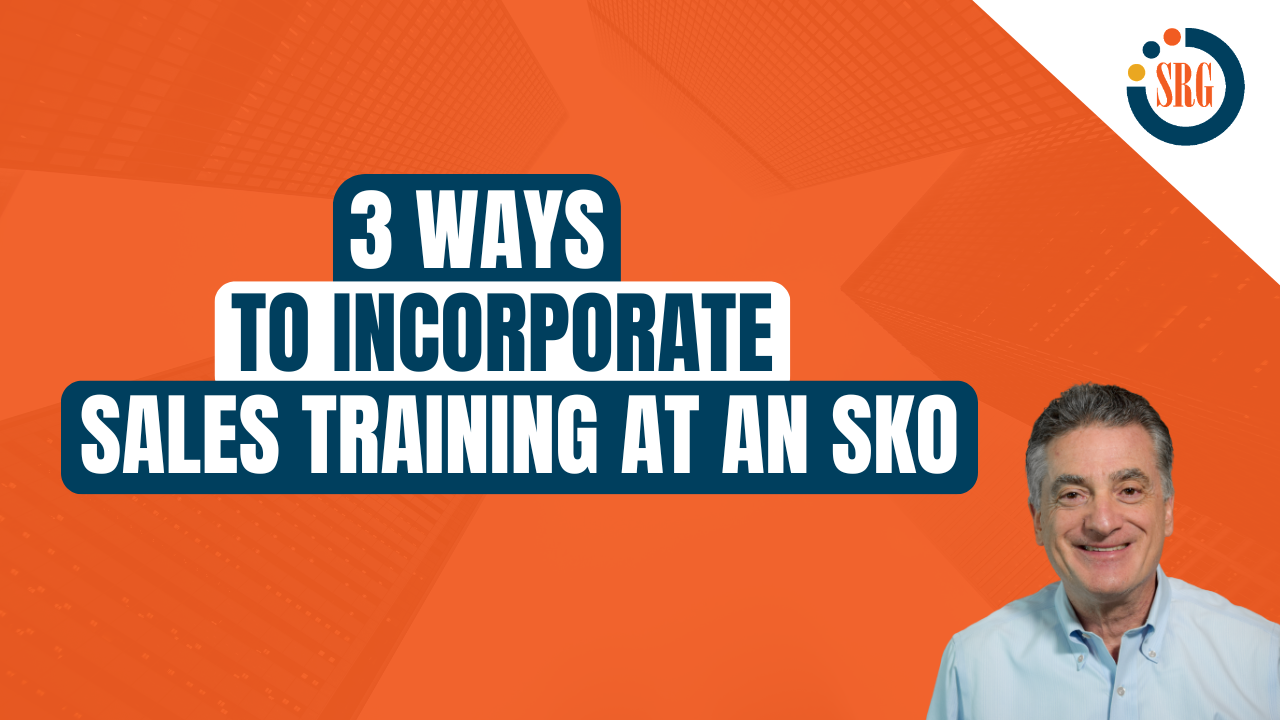
23 Oct 23
Conducting sales training at an annual sales kickoff can be challenging. Here are 3 options to consider and ensure it turns into better results.

Conducting sales training at an annual sales kickoff can be challenging. Here are 3 options to consider and ensure it turns into better results.
Given that one of the most important differentiators for sales professionals is how they sell, it is natural to want to include sales training at your upcoming SKO. However, with a number of competing priorities, you need the right sales training approach to incorporate sales training without sacrificing other priorities.
As one of the few yearly events where your entire sales team is present, an SKO is a key meeting for your organization. It serves multiple purposes, including:
Additionally, SKOs should provide an uplifting experience where the sales team can socialize, bond, and return to their work energized and excited about the new year's great opportunities.
Many organizations turn their sales kickoffs into multi-day events jammed with presentations, leaving participants overwhelmed and anxiously awaiting the next break.
At the heart of this problem is an agenda comprising a series of presentations by various speakers. The presentation format is especially problematic for sales training because it goes against the fundamental principle that adults learn best when engaged.
While presentations can be informative and entertaining, they rarely have a lasting impact. To increase knowledge retention at your sales kickoff, use proven methods to make everything you share more appealing.
You should always try incorporating sales skills into your SKOs with the “less is more” approach. Here are 3 strategies to provide your sales team with specific skills they can immediately apply and excite them to participate in a more comprehensive program.
Instead of the presentation format, incorporate selling skills as a series of interactive sessions where participants can apply their skills. Each session should be limited to a maximum of 25 participants, so it may be necessary for larger sales teams to rotate them. The sessions should focus on a minimal number of skills, emphasizing application.
For example, companies transitioning from a product to a solution sale can offer sessions on call planning, identifying needs, and presenting solutions as a series of 90-minute workshops. These workshops could incorporate real-world scenarios so participants can easily apply the skills when they return to work.
If there are significant time constraints, use the SKO to introduce a sales skills training program that will be rolled out during the year. With this approach, the presentation should emphasize the benefits associated with the program so the sales team can see “what is in it for them.”
For example, if you are introducing a sales negotiation program, you can stress the benefits of higher win rates and improved margins. This format should be limited to 1 hour and incorporate some form of engagement from the sales team, such as brainstorming top negotiating challenges.
You can make sales training at your SKO more exciting by inviting a keynote speaker to share success stories, offer motivational insights, and set a positive tone for the event. When you select a speaker for your event, ensure their personality and message align with your organization to positively affect your sales team’s goals and aspirations.
For example, if you want to introduce a value-driven selling program, connect with a speaker known for being an expert on communicating value and ask them to share real-world examples. This will increase relevancy and allow for greater knowledge retention.
An SKO serves multiple purposes, from team building to product training. Incorporating sales training into your sales kickoff is your chance to set the stage for the year and enhance selling skills. However, remembering some key rules is essential to ensure it sticks.
The biggest mistake to avoid is turning your SKO into a series of presentations. Adults learn best when engaged, so opt for interactive sessions. Keep them small and focused, with a clear emphasis on skills application. Real-world scenarios will help your team immediately apply what they have learned.
Alternatively, use your SKO as an announcement platform. Introduce a sales skills training program that will roll out during the year. Highlight the benefits for your sales team, emphasizing what is in it for them. Keep it concise and engage your team with activities like brainstorming challenges.
Lastly, make your SKO more engaging by inviting a keynote speaker who aligns with your organization's goals and aspirations. They can share success stories, offer motivation, and set a positive tone for the event.
We are committed to helping more companies strive towards unforgettable growth by publishing insightful content regularly. Here are more blog posts we think you might be interested in.